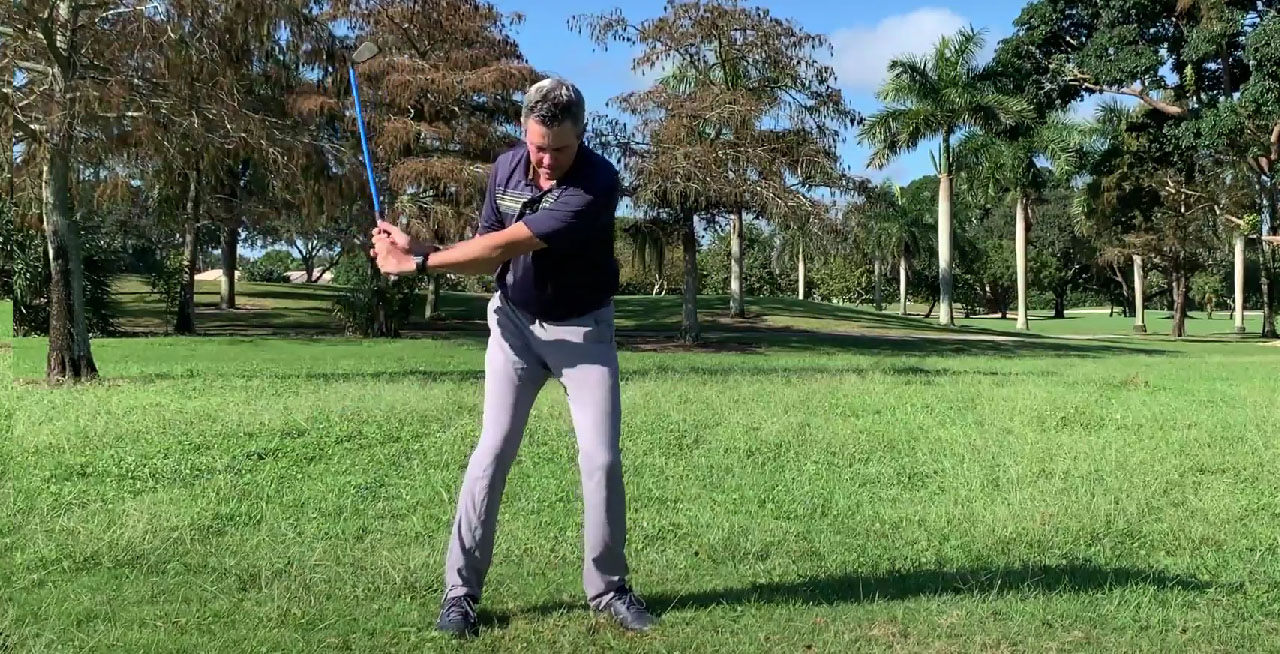Is lag really that important, or is it just hype?
Is it really as crucial as the pros say it is?
Here’s the truth…
Speed can be created in multiple ways, and most amatuer golfers don’t think they need lag. So are they right?
They create speed with their arms, or body, or some combination of both.
Are those good enough ways to play high level golf? Are those ways going to protect your body from injury, forcing you to miss next week’s tee time?
All golf professionals worth their salt have a simple answer to that. No.
Creating lag is the most efficient way to create speed and distance during your golf swing. And every other method isn’t close.
Lag also has a huge added benefit, as it is a way to protect your body from injury. Lag is, in simple terms, the storing of power in your swing represented by the angle between your lead arm and club shaft. The release of this stored energy at the bottom of your swing/impact is how PGA TOUR players hit the ball so far seemingly effortlessly.
Throughout this article, we are going to cover several different benefits that lag possesses, and why you need to learn how to create it in your own golf swing.
- Lag creates speed. When an amatuer golfer is able to store their lag during their downswing, they are then able to release this energy at the bottom, creating serious speed. When a player has no lag, they need to create this speed another way, whether it’s pulling the arms down or rotating your body at an unhealthy speed. Lag, and the release of it, allows a player to create effortless speed.
- Lag creates a better swing plane. Lag is created by having loose wrist pressure throughout the swing, but most importantly, at the top and during transition. When done correctly, the clubhead and shaft will naturally shallow out, making it easier for the player to attack the ball from the inside. This is the obvious sign of a great swing plane.
- Lag represents the complete opposite of one of the most common swing faults in amatuer golf. Casting. Casting is when the player loses the angle between their lead arm and golf club early in the downswing, making it very hard to create speed. If a player is able to maintain that angle early, and create lag, their casting swing fault will go away immediately.
- Lag creates better tempo. Most amateur golfers create speed by pulling their arms down as hard as possible as soon as they reach the top of their swing. This action creates terrible tempo, and makes it very difficult to time up the arms with the rest of the body which is needed to hit quality golf shots. Because the speed created by efficient lag is effortless, the player won’t need to pull their arms anymore. This creates a better tempo in the swing.
- Lag needs to better ball striking. Lag allows the player to hit down on the golf ball more consistently, meaning better shots. If a player is able to do this more often, their overall ball-striking will improve dramatically. Without lag, hitting down on the ball is very hard to do, without getting your entire body sliding to the lead side. Lag allows the player to stay centered over the ball, with better balance, and still hit down on the golf ball.
Lag is incredibly important in order to produce consistently good golf shots. It has countless benefits, including the minimization of injury. Luckily for you, this LAGSHOT training aid will teach you how to create lag in your swing, without having to think about it.
Want to see why a 3-Time PGA Teacher of the Year, Golf Digest Top 50 Instructor, and Golf Magazine Top 100 Instructor ALL recommend Lag Shot to their students?



